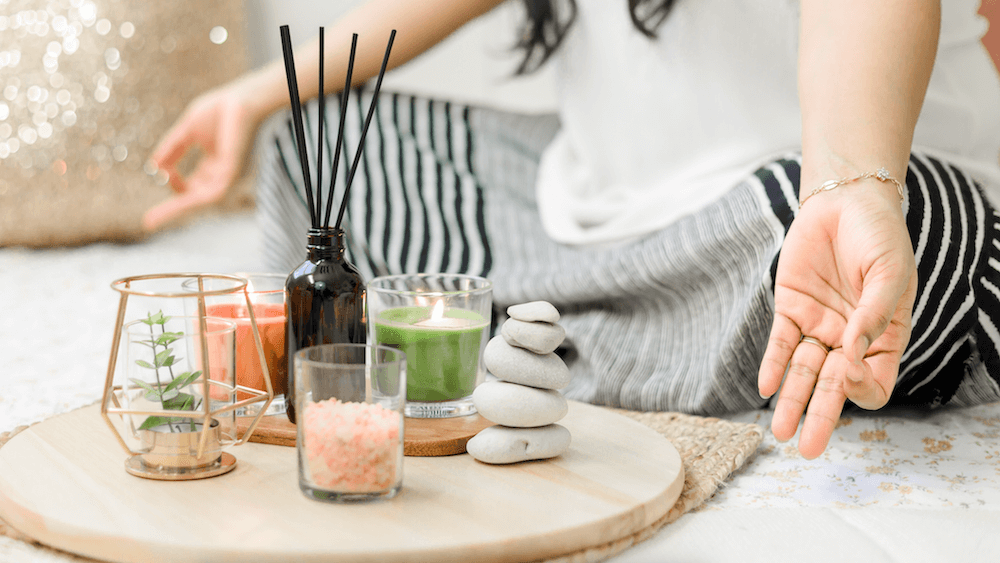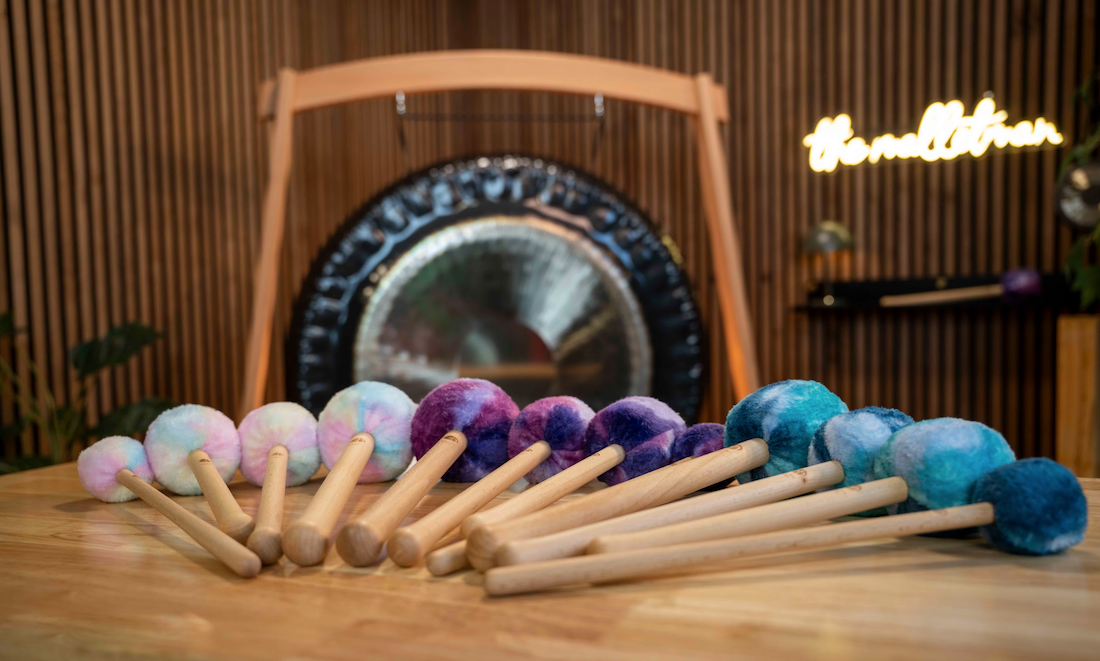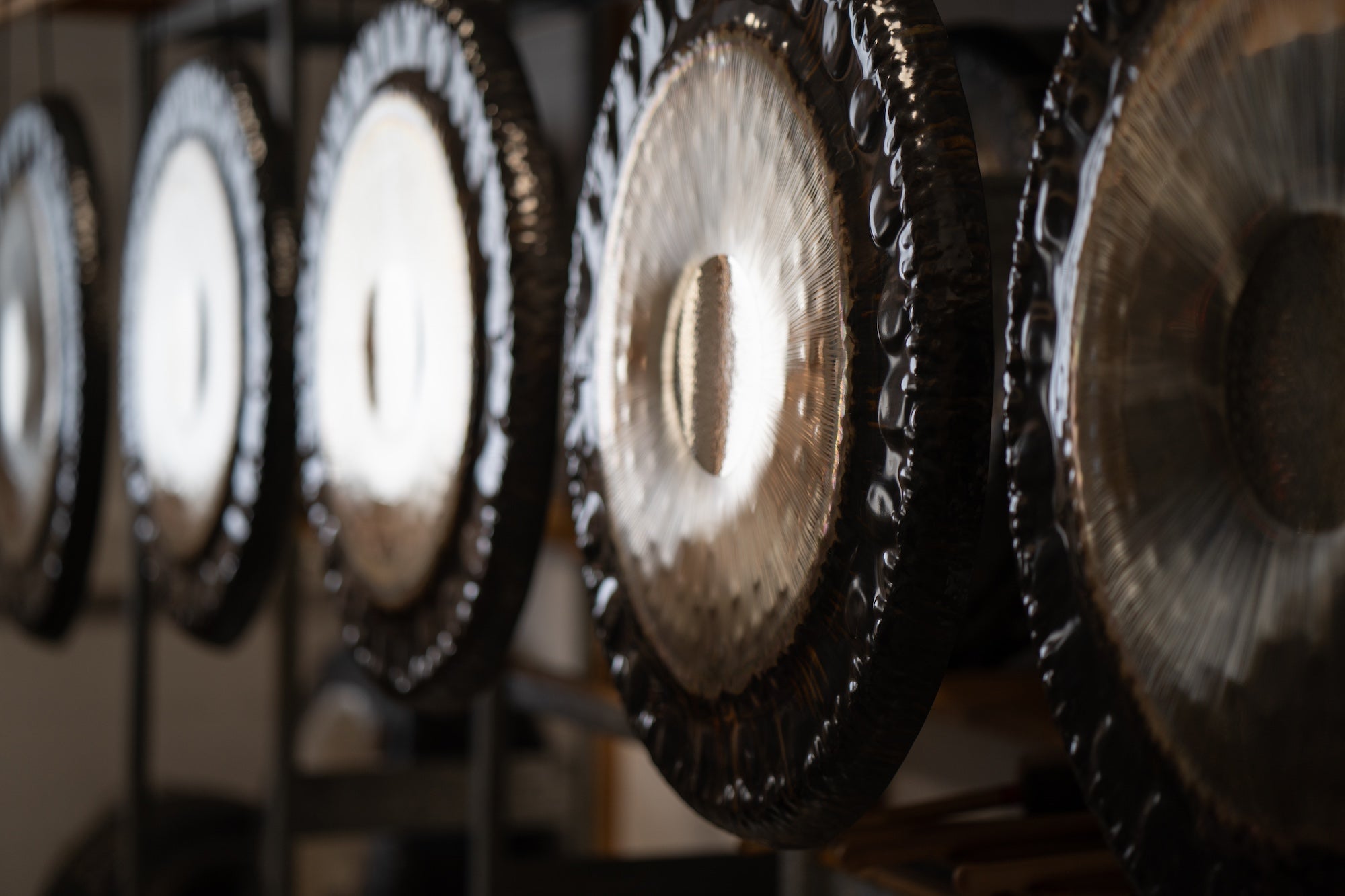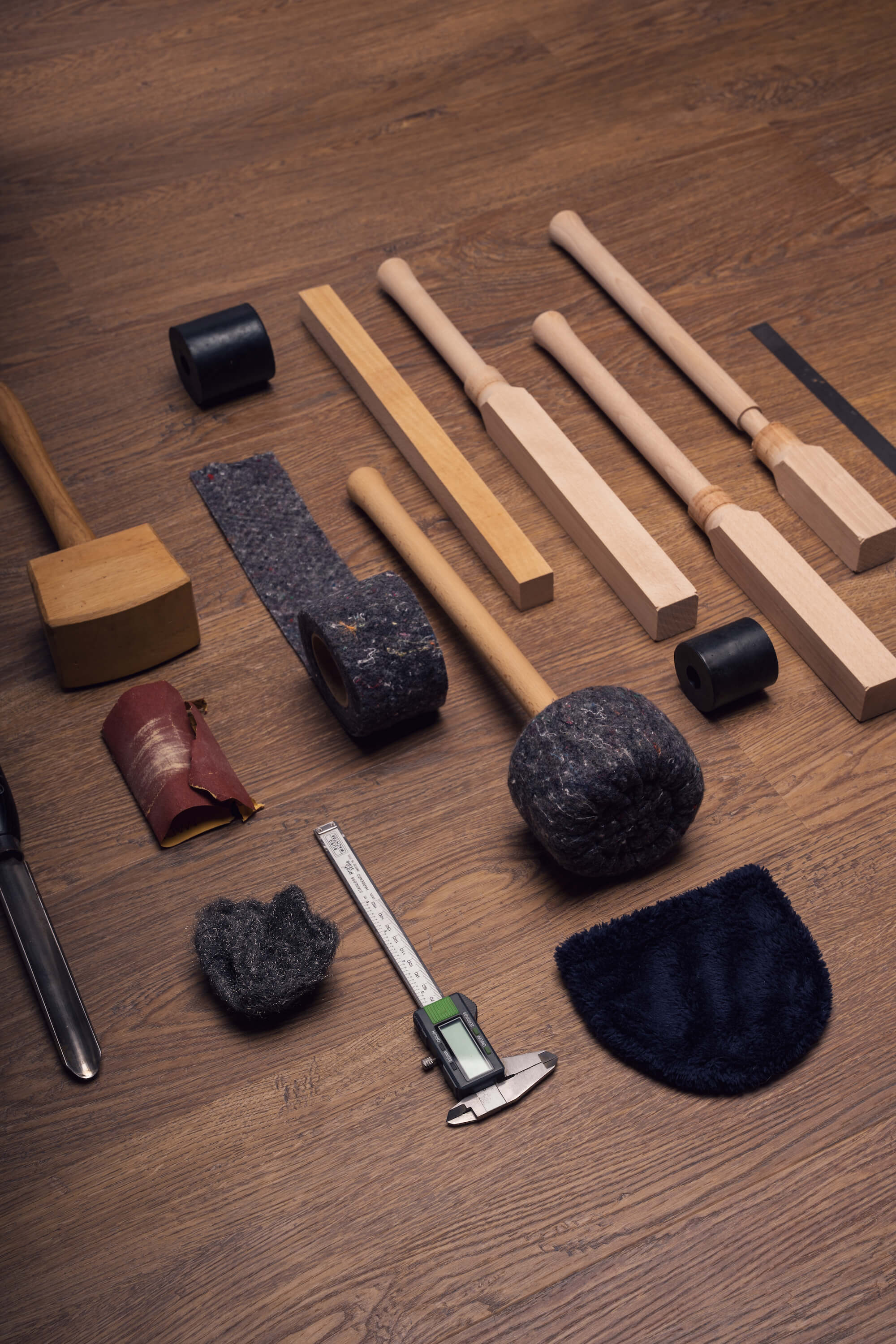Having a place of peace and quiet where you can switch off and listen to yourself has become more important than ever. In the midst of a hectic everyday life, we often ignore our inner voice and forget to consciously perceive our needs. A regular meditation practice with sound in a beautifully furnished meditation corner or relaxation room is a wonderful way to calm circling thoughts, reduce stress and find inner peace.
A comfortably furnished meditation corner or - if you have the space - a furnished meditation room can help you to find your practice regularly. It should be a special place in an apartment or house that invites and inspires you to rest and relax. A gong can add magic to this space and enrich your meditation practice. In this blog post, we show you how you can set up and design your own personal meditation corner at home, with or without a gong.
Find inspiration for furnishing your meditation corner
Before you decide where you want to create your future place of peace and relaxation, it can help to first gather inspiration for the meditation corner or meditation room. Perhaps you have already been to a sound massage practice or a yoga or meditation studio that you particularly liked? What do you find appealing? Try to remember for a few minutes why you felt particularly comfortable in these places. You can also find even more ideas for a lovingly decorated meditation room on Pinterest.
"Light colors and natural materials in your meditation corner are particularly conducive to relaxation. Warm wood, soft cotton fabrics or even stone can create a calming and harmonious atmosphere. Plants can help to strengthen your connection to nature and improve the air quality."
Olli Hess
Find the perfect place for your meditation corner at home
Look around your home and see which room or place you feel most comfortable in. This could be a cozy corner in your bedroom, an airy loft or even a separate meditation room - choose a place that gives you a sense of calm and security.
Set up a meditation corner in the bedroom
If you choose your bedroom as the location for your meditation corner, you should avoid meditating in bed if possible. Your bed is primarily associated with sleep and can cause your mind to either go into rest mode and you fall asleep or your meditation to become less focused and conscious. Instead, we recommend that you set up a separate, quiet space in the room - for example, a cozy corner with a meditation cushion or a chair to create a clear boundary between the sleeping and meditation areas.
Set up a meditation corner in the garden
If you are lucky enough to have access to a quiet garden, this can also be a wonderful place for meditation.
Set up your meditation corner individually
Once you have gathered enough ideas and inspiration, you will probably already know which colors have a pleasant effect on you, which furnishings and materials you find particularly aesthetically pleasing and which aids help you to adopt a particularly comfortable posture. There is no right or wrong here - trust your own feelings when it comes to design. If you are unsure whether an object is suitable for your meditation space, close your eyes for a few breaths, touch the object or hold it in your hand and notice how it makes you feel.
Set up an altar in your meditation corner
A small altar can help you to connect with your inner voice and personal power. It also offers the opportunity to place some objects that are important to you in an appealing way. A small wooden table or a box is usually enough for this. If you like, choose other things that have a special meaning for you. This could be a photo, crystals, a deck of cards or even a journal. The important thing is that the objects have a meaning for you and help you to find a state of inner peace and clarity.
Other ideas for designing an altar:
- small plants, fresh flowers or twigs
- one or more candles
- Incense such as incense wood, incense sticks or incense bundles and a suitable bowl or holder for them
- Soothing essential oils
- a special book with sound rituals, meditations or mantras
- Statues that mean something to you
- a mala necklace
Design a meditation corner with a gong
A gong can enrich your meditation experience and give your meditation corner or room a very special atmosphere. In fact, a gong alone can be the central furnishing element of a meditation room with its aesthetics and symbolism. If you already own a gong and are experienced in working with sound, you can start thinking about where best to place it.
For optimum sound development, you should note the following:
- Make sure that there is enough space around the gong. Ideally, you should not place it directly next to an altar or other pieces of furniture, but give it enough space to develop its vibrations.
- It is best to position the gong on a special gong stand. It should have sufficient distance to the wall on all sides, be easily accessible for you and be visible in its entirety.
- Experiment with different positions to achieve the best possible sound.
- Some traditions recommend placing the gong in the east to symbolize the energy of sunrise and new beginnings.
By carefully integrating the gong into your meditation space and choosing a particularly suitable location, you can utilize the full sound potential of the gong and have a deep meditative experience. If you are looking for inspiration for your gong practice, we recommend our gong meditation for more gratitude in everyday life.
If you don't have a chime yet but are thinking about buying one, expert advice can be helpful. Above all, it is important that you choose a gong that suits you and your needs. There are different types, sizes and materials of gong, each with different qualities and characteristics. So take enough time to find the perfect gong for your meditation corner or room and seek advice from an expert if you have any doubts. Olli Hess will be happy to assist you with his knowledge and experience .
Storing gong mallets and friction mallet
Gong mallets and gong drivers are also aesthetic tools that you can use to enrich your meditation corner. Placed in a basket or in a small box, you can always keep them within easy reach in your meditation corner. Keep in mind, however, that both mallets and friction mallet should be stored in closed, light-protected packaging when not in use. This will prevent any loss of quality and extend their lifespan.
We supply our mallets in a practical cotton bag. This is not only sustainably produced, but is also ideal for protecting your gong mallets from UV radiation and dust.
Olli Hess
Seating, cushions and pads for your meditation room
Regardless of whether you set up your meditation corner with or without a gong, it is important that you can sit or lie down comfortably at any time. You may have different seating options to adapt your position to your current state of mind or your meditation. Special meditation cushions or meditation stools can help with this. You can also have a blanket and other cushions ready if you want to lie down after a sound meditation. Never be afraid to change your position during meditation - the most important thing is that you can relax well.
Pleasant light for your meditation corner
Natural light in your meditation corner can create a positive mood. If possible, set up your space near a window or perhaps in a sheltered spot in the garden.
When it is dark outside, soft, subdued light from candles or dimmable lighting create a relaxed atmosphere. Warm light with a yellow or orange tint is particularly conducive to relaxation. Make sure that floor lamps or wall lamps have light directed upwards so that your meditation room is not directly illuminated.
Now you are ready to set up your own meditation corner at home, with or without a gong. Change this place as often as you like and as your gut tells you. The great thing about it is that your personal retreat often reminds you to pause regularly and listen to your needs, even in the hustle and bustle of everyday life. Take time regularly to meditate there in silence, play your gong or simply consciously relax your body.
Your checklist: Set up a meditation corner
Finally, we have summarized our tips for setting up a meditation corner in a checklist for you:
- Choose a quiet place in the apartment
- Decide on a comfortable seat (cushion, stool)
- Integrate soft lighting
- Add elements for relaxation (plants, gong, altar)
- Design with feel-good colors & natural materials





